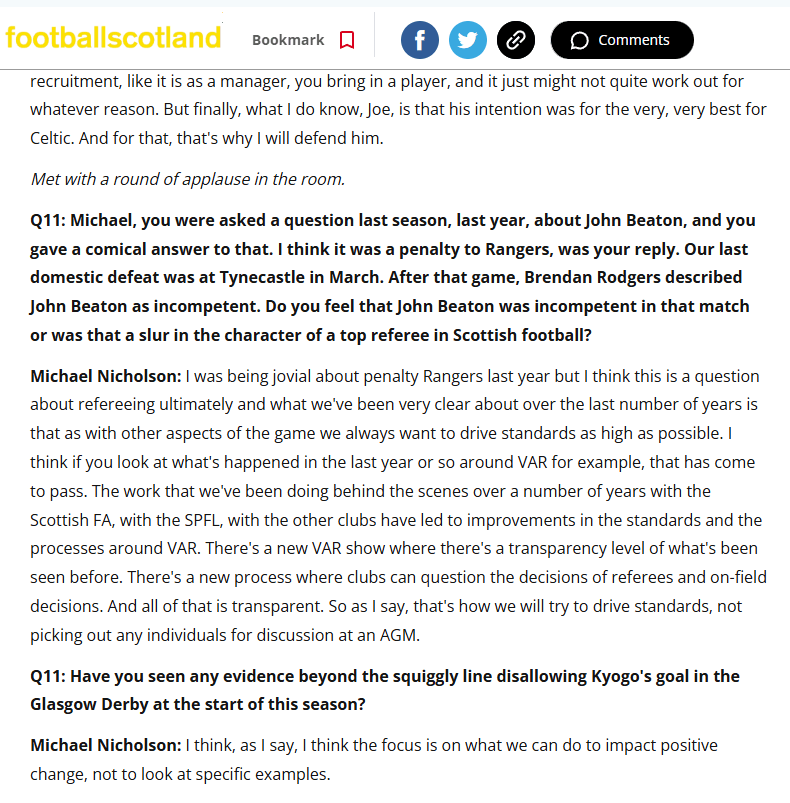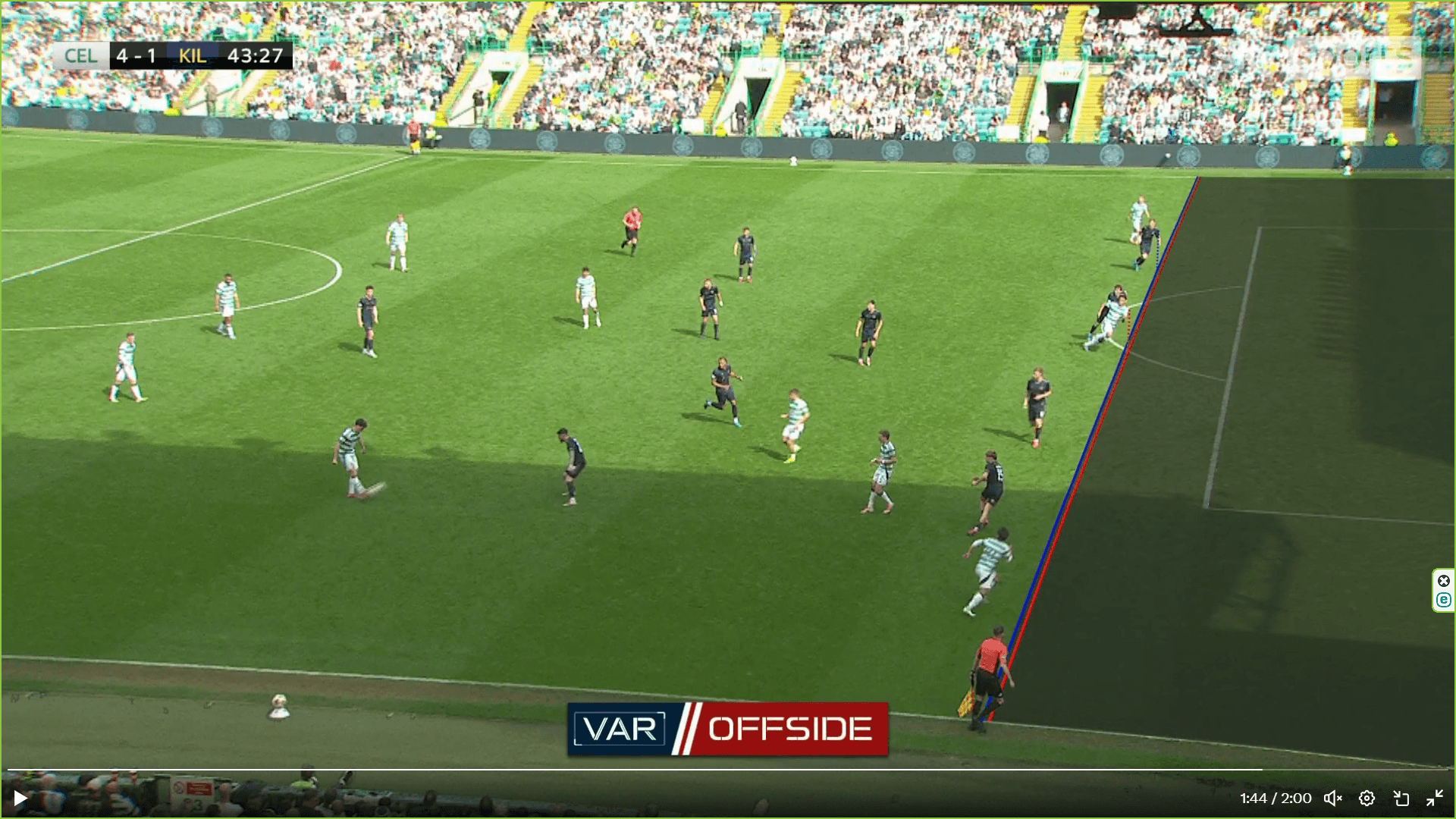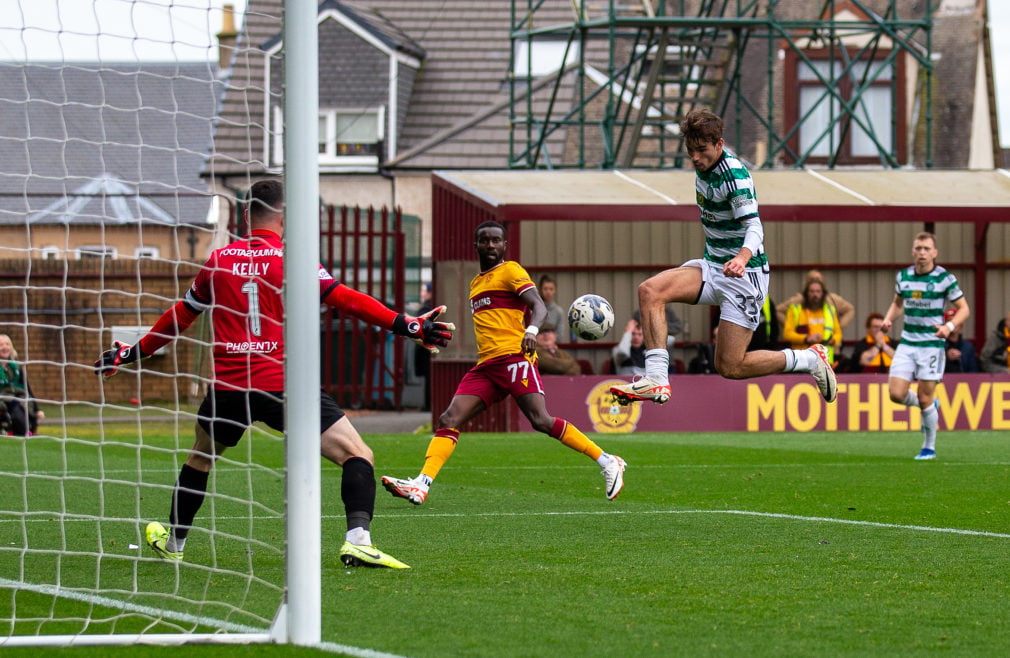VAR is flawed, inaccurate and has a margin for error or as many would put it, is open to manipulation.
On borderline decisions, such as Daizen Maeda’s disallowed goal against Kilmarnock last week it is possible to come up with either option- goal or no goal.
Bjørnar Posse Sandboe is a Director of a Norwegian Second Division side with a full time job in television which gives him an insight into the technology used in VAR. In Norway clubs have access to a Data Bank which holds the footage used for VAR decisions. After seeing the dodgy image of Maeda’s ‘goal’ on Twitter he contacted Harry Brady from Celtic Underground.
In a 78 minute podcast more light was shed on VAR than the SFA and the Scottish media have produced despite the flawed system now being into its third season of use.
Gordon Duncan was used to front the introduction of VAR in October 2022, after that the SFA closed ranks as the excuses were rolled out to favoured outlets to explain why no penalties were being awarded against Connor Goldson.
Penalties and red cards will always be subjective, especially when John Beaton is on duty for Celtic visiting Tynecastle but factual outcomes should be achieved on offside decisions.
Three times this season Celtic have been ‘goals’ disallowed when the squiggly lines are introduced, when Michael Nicholson was asked at the 2024 AGM about Kyogo’s goal in the September Glasgow Derby being disallowed he moved swiftly into his favoured deflection mode.
While the squiggly lines are a laughing stock, or a levelling up tool, VAR is flawed on a number of accounts as Sandboe explained in a detailed analysis on a Norwegian website.
Overlaying the VAR tool onto a two dimensional screen is instantly flawed, during the podcast Sandboe explains how the ‘replay operator’ has scope to come up with their preferred outcome.
The offside decision is made when the ball is struck but even that is a problem that can quickly factor in distances. There is a moment, or time frame between just before the ball being struck and when it is kicked. A margin of error appears.
Pitch measurement, Software calibration, Camera synchronization. Video resolution and ‘Motion blur and movement between frames’ all create their own margin for error, often in offside decisions the defending player and the attacker are moving in different directions.
An unknown ‘replay control’ then produces the evidence for someone like Greg Aitken to make a decision.
In summary there wasn’t evidence to disallow Maeda’s ‘goal’ against Kilmarnock, various human factors were put together to cancel out the ‘goal’ from the Japanese striker.
Five times this season proper Var (with much reduced margins for error) has been in use at Celtic matches, there has been some painful offside calls made in the Champions League but almost every fan accepts that Kyogo was marginally offside three times in the match against YB Berne, virtually no-one accepts that Adam Idah was offside in the build up to the ‘goal’ against Kilmarnock with the same verdict on Andrew Dallas’ decision to disallow Kyogo’s goal in the September Glasgow Derby.
Celtic Underground reports
This conversation delves into the complexities and controversies surrounding VAR (Video Assistant Referee) technology in football, particularly focusing on offside decisions.
The discussion highlights the limitations of current technology, the challenges of accurately interpreting video footage, and the implications for the integrity of the game.
Harry and Bjørnar emphasise the need for better understanding and transparency in VAR operations, as well as the importance of maintaining the joy of football amidst technological interventions. The chat delves into the complexities and controversies surrounding VAR (Video Assistant Referee) in football. highlighting the impact of VAR on refereeing, the challenges of making accurate decisions, and the public’s perception of referees. It also explores the specific context of VAR’s implementation in Norway, the technology’s limitations, and the role of fans in shaping the future of football.
If you are a subscriber, read the accompanying article where Bjørnar sets out why decisions can be wrong by over 30cm.
jjjjjjjjjjjjjjjj
Fotball Supporter Norway summarises the issues with

If the SFA truly believed in their technology that they are using they could produce the distance involved in offside decisions, clearly they would rather keep that secret.
Celtic Park, Ibrox and Tynecastle all used UEFA standards VAR this season in European competitions, then had them taken out for domestic matches.
If the SFA wish to improve the game and increase confidence in decision making they should ensure that six sets of UEFA level cameras are in use every weekend.
That would remove the suspicions currently in place over Dallas Junior and Aitken who made the decision to deny Maeda a goal against Kilmarnock.

RELATED READING








1 Comment
by Joe Giannandrea
I can just see other Celtic fans like myself falling over in shock all over the world at this revelation today!
Give us a break! Do you really think we didn’t know this already?
Corrupt officials, especially those like Andrew Dallas, have ALWAYS manipulated the lines when it came to Celtic! Alan Muir, was a complete disgrace on more than one ocassion in his attempt to stop the train! In fact, the league should already have been done and dusted! But because of his corruption 8n the Hibs game which cost us AT LEAST two points, and here we are, technically requiring a single point!
These guys are chears, and it does beg the question, “are they responding to the orders from Willie Collum?”. Because we all know there was no more anti-Celtic cheat than Willie himself! He was as bad as Hugh Dallas and Iain Brines!
We have always had a very long string of corrupt officials to deal with in Scotland.
Who can forget a couple of seasons back the absolutely HORRENDOUS VAR call to disallow a Celtic goal against Motherwell at Fir Park which was actually at the OPPOSITE END OF THE PARK! The best part? Maeda was in his own half!
So “margine for error” is a smokescreen for, “how can we shaft Celtic”.